Climate monitoring and AI: The Copernicus Project

Travelling to Bangladesh this summer is again on my radar screen. Like many others, I usually wait for the weather to cool down before making my travel plans, but this year, we need to be in Dhaka by mid-June to celebrate my octogenarian mother-in-law's birthday. "It's going to be very hot this year," she warns us. "No worries, it's our pleasure," we reassure her. "If you can take the heat, so can I."
However, we all know this year could be one of the hottest in recorded history. But I don't want to stay indoors in Bangladesh during the entire trip, so I am counting on the monsoons to bring some relief.
Coming back to the main topic of my column for today, climate change and global warming—last week, the Copernicus Report announced that on February 2024, the world marked the ninth consecutive month of record-breaking heat. New data from Copernicus, the European Union's climate change monitoring service, shows that last month was also the hottest February on record globally, with "exceptionally high" temperatures in both the air and sea.
The Copernicus Report is another reminder for global leaders about the global warming trajectory that we are on now. The world is on track to cross over a dangerous line, the 1.5 degrees Celsius of warming on average, a key limit in the Paris Climate Agreement. The report focuses primarily on surface air and sea level air temperature in European countries and their water bodies. It also shows that the average global sea surface temperature (SST) for February 2024 over 60 degrees South to 60 degrees North was 21.06 degrees Celsius, the highest for any month in the dataset, above the previous record of August 2023 (20.98 degrees Celsius).
This report provides an assessment of past and projected climate change and its impacts on ecosystems and society. It showed that surface temperature and SST have been rising over the last few months as well as years. Regardless of the efforts of the European countries to curtail fossil fuel consumption and its vigorous renewable energy effects, Europe is on the path to exceeding the 1.5 degrees Celsius mark.
The Copernicus Group is part of the "European Earth observation programme for monitoring our planet and its environment for the benefit of Europe's citizens." According to its website, the Copernicus Climate Change Service (C3S) supports society by providing authoritative information about the past, present, and future climate in Europe and the rest of the World.
So, what do we make of this data and report? What are the major takeaways?
First, the rest of the world must take notice that we are now still in the so-called Goldilocks zone, where the temperature is not too hot and not too cold for our survival. Since the 2016 Paris Agreement, we have been mired in many wars, and various other short-term and medium-term crises have overtaken our concern for the well-being of people on this planet, who are spread geographically and also for the next generation. Secondly, we must prioritise the action plan for sustainable growth again while we wait for the next COP meeting. We need to look at the other pointers, metrics, and indicators to assess what else we need to do to lower carbon emissions and the cost of renewable energy, enforce the recently signed global methane protocol, and rein in other contributors to global warming. Thirdly, the international community acting in unison would do well to reassess our sustainability targets and the impact of all the work we have done so far. While we have not heard from the UN or Intergovernmental Panel on Climate Change (IPCC) lately, we need more regional cooperation in Asia and Africa to match Europe in collecting regional data and early warning systems to combat the effects of climate change. The South Asian countries could use effective tools for early warning and monitoring catastrophic events: drought, floods, earthquakes, and wildfires.
An essential lesson for Bangladesh, particularly in light of the recent shopping mall fire, is the need for disaster risk management (DRM) furthered by proactive measures and aggressive enforcement. The government agencies engaged in urban development, similarly, need to explore better tools for urban trend monitoring, analysis, and calculation of spatial urbanisation and trend identification to inform local policies and actions.
The Copernicus Group has used drone imagery and AI to successfully guide disaster response. Case studies include major floods in Greece, Slovenia, Italy, and Libya, wildfires in Greece, and seismic activities in Morocco. DRM is constantly upgraded through machine learning and artificial intelligence. The next development area is integrating high-resolution aerial and drone data with satellite imagery to increase mapping accuracy for GIS.
Along with Europe, the USA continues to battle weather extremes. In recent weeks, communities nationwide have seen spring- and summer-like temperatures, extreme rain and flooding, massive snowfall, and fire weather conditions that drove Texas' largest-ever wildfire which quickly became one of the biggest in US history. Those extremes are a byproduct of the climate change-fuelled rise in global temperatures and are only expected to become more frequent and intense as warming continues.
Last week, the European Environment Agency sounded an alarm in it's first-ever risk assessment for the bloc. The European continent is not ready for climate change: it faces growing climate risks and is unprepared for them, the agency said on March 11. Europe, the fastest-warming continent, has been heating up twice as fast as other regions since the 1980s. It is prone to more frequent and punishing weather extremes, including wildfires, drought, and flooding. Europe needs to immediately address these issues to protect its energy, food security, water, and health, the agency said.
The report identified 36 major climate risks for the continent and found that more than half demand more action now.
What's the lesson for Bangladesh? Invest in DRM tools for the management of water resources, energy, agriculture forestry, and health. Also, better planning and risk management strategies will help us to manage tourism, infrastructure, insurance, disaster risk, transport, and coastal protection.
As I prepare for my upcoming trip to Bangladesh, I am looking at the maps and GIS data to find out a soft landing time frame. I am looking for the best few weeks to allow us to be in Dhaka and other towns where I grew up, including Sylhet, Barisal, Mymensingh, and Dinajpur, while staying cool and dry. Almost like the Goldilocks fairy tale, where one always hopes for a perfect weather regime that is not too hot nor too cold.
Dr Abdullah Shibli is an economist and works for Change Healthcare, Inc., an information technology company. He also serves as a senior research fellow at the US-based International Sustainable Development Institute (ISDI).
Views expressed in this article are the author's own.
Follow The Daily Star Opinion on Facebook for the latest opinions, commentaries and analyses by experts and professionals. To contribute your article or letter to The Daily Star Opinion, see our guidelines for submission.

 For all latest news, follow The Daily Star's Google News channel.
For all latest news, follow The Daily Star's Google News channel. 


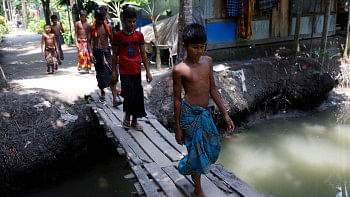


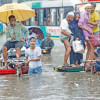
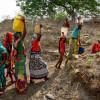
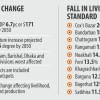
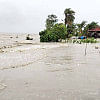
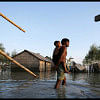


Comments